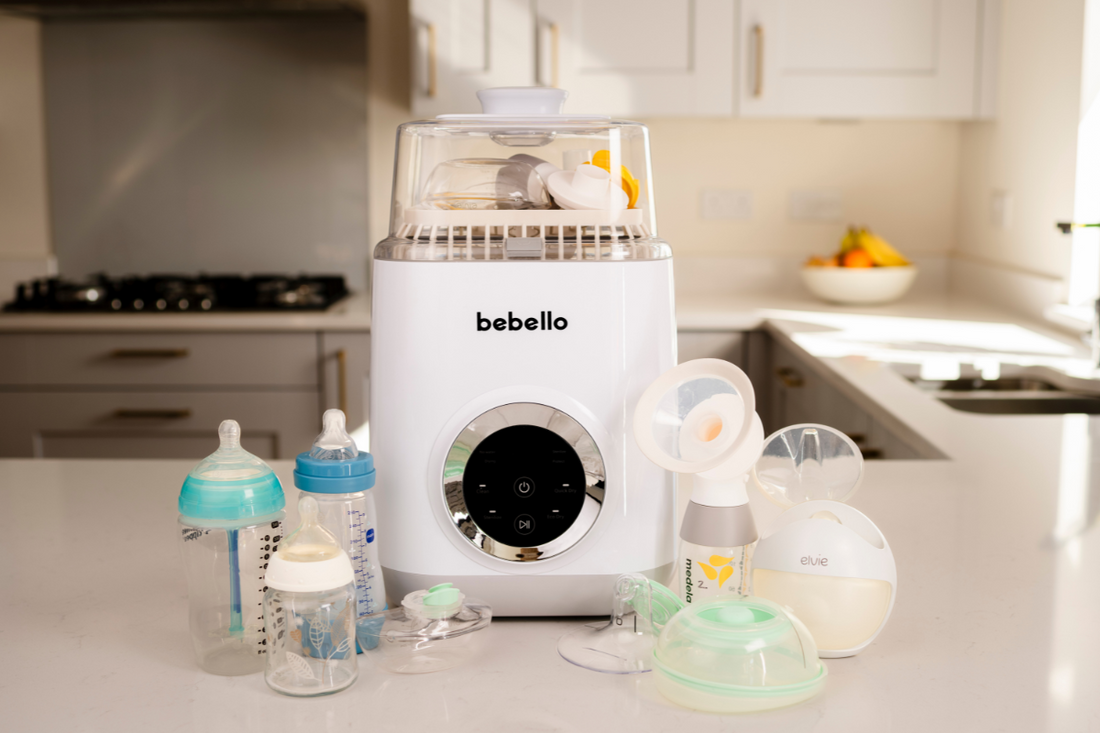In this article we tackle some jargon surrounding baby bottles and review the best-selling baby bottles on the market.
The range of baby bottles available on the market is growing rapidly. Here we provide some helpful tips on how to make the right choice for you.
Firstly, here are some key considerations (and a bit of myth-busting) to help you choose your baby’s perfect bottle.
Nipple Confusion
According to the World Health Organisation, bottles should be designed in a way that supports ongoing breastfeeding, helping to reduce the risk of ‘nipple confusion’.
It is said that parents may try up to seven teats before a child will find one that works for them. In truth, most newborns find feeding challenging and inefficient in the early days. The key is perseverance, allowing your baby time to develop and perfect their feeding technique.
Flow rate
NHS guidelines recommend that newborns should use bottles and teats with the slowest flow rate available. Always check flow rate ratings when purchasing.
A teat with too fast a flow can overwhelm a newborn, while older babies typically require faster flow rates to meet their increased feeding needs.
Colic
Colic remains quite poorly understood, with ongoing debate about its causes. The general understanding is that the newborn experiences unsettling pain caused by the build-up of bubbles in their tummy from air in the milk. Many bottles marketed as “anti-colic” are designed to allow air into the bottle whilst avoiding bubbles.
While these designs may help, it’s more likely that colic stems from poor latching technique—whether on breast or bottle. Practising effective burping after every feed is likely to be more beneficial than relying solely on anti-colic bottles.
Size
Like most things in life, bottles have grown in size! Our tip here is to step back and consider what you actually need. During the first three months, babies feed little and often, so having several smaller bottles is ideal. As your baby grows, their feeding becomes less frequent but larger in volume.
Our recommendation would be to start with smaller bottles in the early days. They will be easier to clean, take up less storage space, and meet your baby's initial needs. As your newborn grows, you can then upgrade the sizes as you move to higher flow rate teats. View our tips on how to store sterilised baby bottles here.
Glass vs Plastic
There isn’t a major difference between glass and silicone feeding bottles in terms of functionality. Glass baby bottles tend to be more expensive and heavier, which can be a drawback if you're frequently on the move, but also eliminates any concerns about microplastics.
The risk of microplastic exposure to newborns from plastic baby bottles is not currently considered a health concern.
Cleaning
Finally, the biggest impact baby bottles will have on your life is the time taken to clean and sterilise them—often up to an hour a day. That’s valuable time that could be spent on parenting, chores, self-care, or simply catching up on sleep.
Innovations like the Baby Bottle Washer from Bebello can significantly reduce the hassle and time spent cleaning, making bottle-feeding less stressful and more manageable.
Top Bottles Compared
Small Bottles (125ml-150ml)
 Dr Browns Natural Flow (150ml)
Dr Browns Natural Flow (150ml)
Cost/Pack: £8.49/1
Cost/Bottle: £8.49
Parts to Clean: 6
Bottle Washer Fit: 4-6.
Notes: The straw holder can be hard to clean.
Tommee Tippee Natural Start (150ml)
Cost/Pack: £19.99/3
Cost/Bottle: £6.66
Parts to Clean: 7
Bottle Washer Fit: 4.
Notes: The straw holder can be hard to clean, whilst the small silicone star that attaches to the end of the straw can be easy to lose.

Philips Avent Natural Response (125ml)
Cost/Pack: £14.99/2
Cost/Bottle: £7.49
Parts to Clean: 4
Bottle Washer Fit: 4-6
NUK First Choice (150ml)
Cost/Pack: £22.99/4
Cost/Bottle: £5.75
Parts to Clean: 4
Bottle Washer Fit: 6-8
Notes: The Nuk feeding bottle’s narrow design makes it better for bottle washer fit.
MAM Easy Start (160ml)
Cost/Pack: £25.89/3
Cost/Bottle: £8.63
Parts to Clean: 6
Bottle Washer Fit: 4-6.
Large Bottles (270ml-340ml)
Dr Browns Natural Flow (270ml)
Cost/Pack: £30.99/4
Cost/Bottle: £7.75
Parts to Clean: 4
Bottle Washer Fit: 4-6. View loading guide here.
Tommee Tippee Natural Start (340ml)
Cost/Pack: £23.49/4
Cost/Bottle: £5.87
Parts to Clean: 7
Bottle Washer Fit: 4. View loading guide here.
Notes: This Tommee Tippee feeding bottle is the largest capacity bottle on the market.
Philips Avent Natural Response (330ml)
Cost/Pack: £21.99/3
Cost/Bottle: £7.33
Parts to Clean: 4
Bottle Washer Fit: 4-6
NUK First Choice (300ml)
Cost/Pack: £24.99/4
Cost/Bottle: £6.25
Parts to Clean: 6-8
Bottle Washer Fit: 6-8
MAM Easy Start (260ml)
Cost/Pack: £25.80/3
Cost/Bottle: £8.60
Parts to Clean: 6
Bottle Washer Fit: 4-6. View loading guide here.
NB: All bottles reviewed are silicone feeding bottles. All brands have glass baby bottle options available. Most brands offer multiple sizes between 125ml-340ml.



